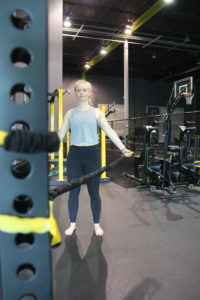
Most of us want to run longer and faster, but is increasing your reps in the gym the best way to improve your endurance as a runner? By this I mean, should you stick to reps of 10, 15 or 20 per exercise (i.e. endurance strength) if you are an endurance athlete? To date, it is generally accepted that heavy / explosive strength training has the greatest performance benefit for endurance athletes. This style of training is best carried out in lower rep / higher weight exercises (the opposite of what is mentioned above) to gain the appropriate muscle changes that help us run faster / longer. However, there is a significantly greater risk of injury when doing this style of training. This is especially true if you do not have a background in strength training and / or have taken some time away from the gym. So where do you start? If motivation is an issue, check out this post otherwise, read on!
Heavy / explosive strength training has the greatest performance benefit but high rep / low weight endurance strength training has its place too!
Although “endurance strength” does not give us as many performance benefits as heavy / explosive strength training, it’s one of the best ways to build a strong foundation of strength. Doing high rep, low load exercises allows you to learn and practice new movement patterns in a safer way with less chance of injury if you happen to make a mistake. For example, when learning how to engage the muscles around your shoulders, bands are a great way to practice a pulling motion with your arms without your whole shoulder moving around. I will often use this exercise with new clients because it’s difficult to get “too much” resistance compared to using free weights. Bands are safe to practice at home and can be made harder as you get stronger.
In addition, doing a few weeks of “endurance strength” helps make your muscles more efficient at moving lighter weights and therefore “frees-up” muscle for lifting heavier things. Despite the weight being light, it is still important that your muscles are actually fatigued at the end of each set. For example, if you are doing 10 squats, the last 2 should be difficult to complete. If after 10 you could do 3 – 4 more squats, it’s time to up the weight. Lastly, in order to get the most of this stage if is important to change up the sets or reps EVERY WEEK. This is called progressive overload. If you do the same exercises, for the same reps with the same weight every week, your muscles have nothing to adapt to and you eventually begin to lose strength.
It is important to change up the sets or reps in EVERY WEEK
The most important part of improving strength as an endurance athlete is that you DO NOT STAY IN THIS ENDURANCE STRENGTH PHASE. This is where most athletes get caught up and get stuck. There are absolutely benefits of endurance strength training, but it’s the heavy and explosive strength training that helps improve running economy. Of course there is a place for certain endurance exercises in a strength / power program (such as particular injury prevention / rehab exercises) but your main focus should be lowering the reps and increasing the weight. Again, if you can do more than the prescribed sets / reps, it is essential that you increase your weight. This is more challenging to do with heavier sets, as proper technique is a must when doing heavy, loaded movements. Since some of the movements that work great for heavy and explosive training can be complicated to learn on your own, it is ideal to be working under the guidance of a trainer.
Amanda Regnier
Run Coach
MSc. Strength & Conditioning, C.S.C.S